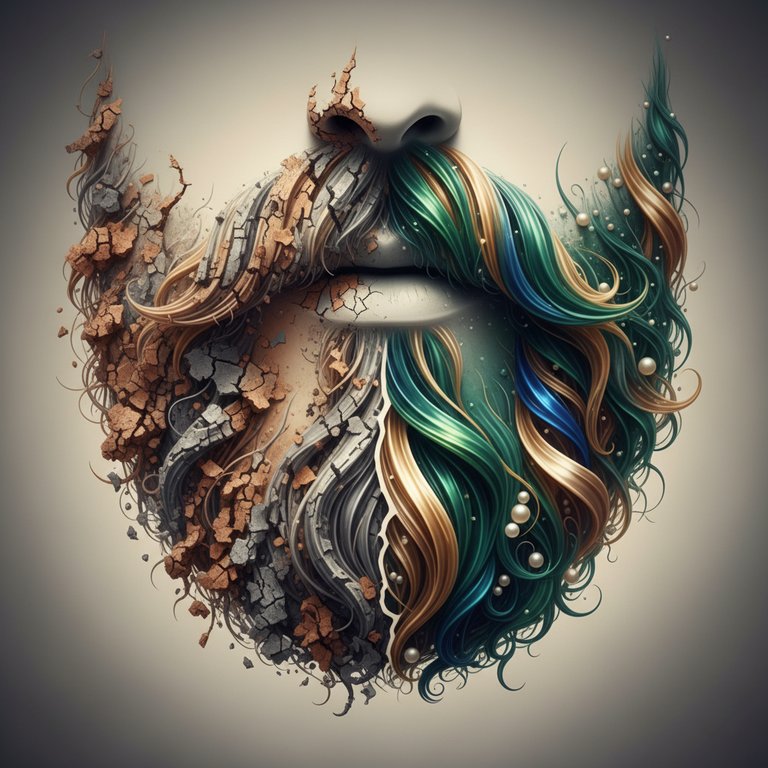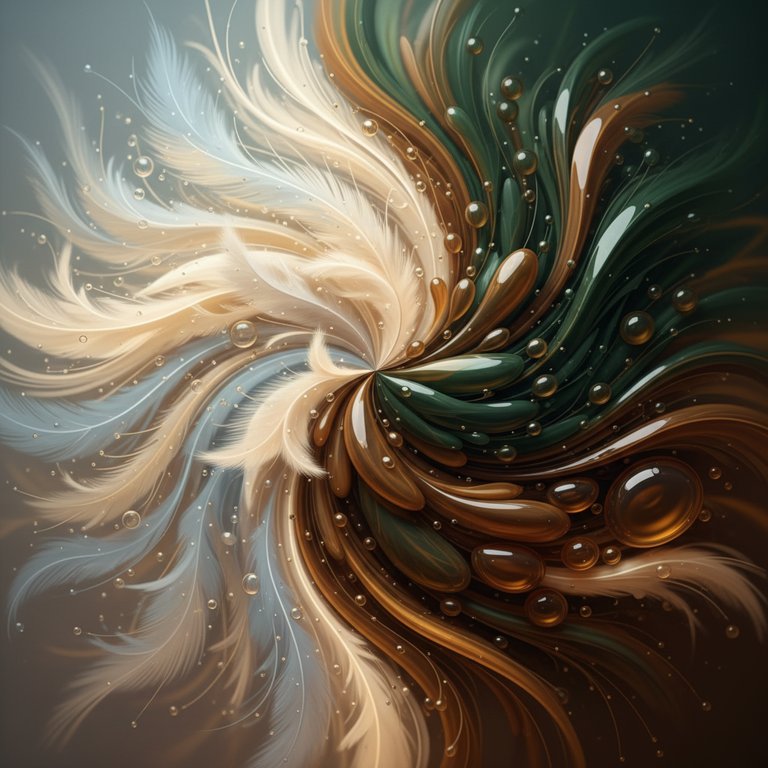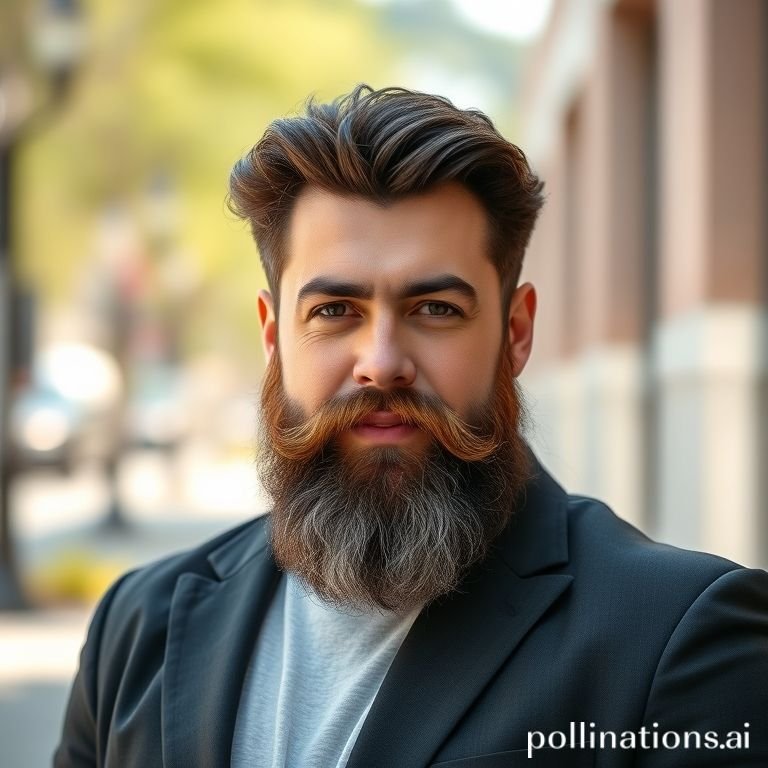Hey there, fellow beard enthusiast! Ever stepped out of the pool, towel-dried your magnificent facial forest, and caught a glimpse in the mirror that made you do a double-take? Maybe your beard felt a bit drier, or perhaps, if you have a lighter beard, you noticed a slight, unwelcome tint. If you’ve ever wondered, “Can chlorine bleach my beard color?” then you’ve come to the right place. Let’s dive deep into this common concern, without getting too technical, and figure out how to keep your beard looking its best, even after a refreshing swim.
The Truth About Chlorine and Your Beard
First off, let’s clear up the "bleaching" part. When we think of bleach, we often imagine those harsh chemicals that strip color entirely, leaving things white or significantly lighter. While pool chlorine is a powerful disinfectant, it doesn’t typically bleach your beard in the same way household bleach would. However, it absolutely can affect your beard’s color and overall health in noticeable ways.
Chlorine’s main job in a swimming pool is to kill bacteria and keep the water clean. To do this, it’s designed to be a strong oxidizing agent. When your beard comes into contact with chlorinated water, this oxidizing action can interact with your hair’s natural proteins and oils. Think of it like a very aggressive cleanser. It strips away the protective sebum that naturally coats your beard hairs, leaving them dry, brittle, and much more porous.
This increased porosity is where the color changes often come into play. It’s not necessarily the chlorine itself turning your beard a different color, but rather its effect on your hair’s structure, making it susceptible to other elements in the water. So, while it might not "bleach" it white, it can definitely cause discoloration and make your natural or dyed color appear duller or even shift.
Why Your Beard Might Change Color After a Swim
So, if it’s not direct bleaching, what’s actually happening? There are a few key culprits at play once chlorine has done its initial work:
The Stripping Effect
As mentioned, chlorine is fantastic at stripping away the good stuff – your beard’s natural oils. These oils are your beard’s first line of defense, keeping it moisturized, shiny, and protecting its color. Without them, your beard hairs become dry, rough, and their outer layer (the cuticle) can lift. This makes the hair strands more vulnerable and less able to hold onto their natural pigment or any dye you might have applied.
Mineral Buildup and the Infamous Green Tint
This is where the dreaded green tint often comes from, especially for those with lighter beards (blonde, grey, or light brown). Pool water, even when clean, often contains trace amounts of metals like copper, iron, and manganese. When chlorine oxidizes these metals, particularly copper, they can bind to the porous, stripped-down protein in your hair. The copper molecules then reflect light in a way that creates a greenish hue. It’s less about the chlorine dyeing your beard green and more about the oxidized metals sticking to it because of the chlorine’s actions.
Interaction with Beard Dye
For those who color their beards, chlorine can be a real enemy. It can accelerate the fading process, making your dye wash out faster. Even worse, the chemicals in chlorine can sometimes react directly with the components of your beard dye, leading to unexpected color shifts or a dull, muddy appearance. It’s like trying to mix oil and water, but with your beard color at stake!
Protecting Your Precious Mane: A Step-by-Step Guide
Don't fret! You don't have to choose between a refreshing swim and a glorious beard. With a little preparation and post-swim care, you can minimize chlorine's impact. Here’s a simple, step-by-step routine:
Step 1: Pre-Swim Prep – Get it Wet and Protected
- Rinse with Fresh Water: Before you even dip a toe in the pool, thoroughly wet your beard with clean, non-chlorinated water. Think of your beard as a sponge. If it's already saturated with clean water, it will absorb less of the chlorinated pool water.
- Apply a Barrier: Once wet, apply a generous amount of beard oil or a leave-in conditioner. This creates a physical barrier on your beard hairs, further preventing chlorine and minerals from penetrating and causing damage. It’s like putting on a tiny protective shield for each strand!
Step 2: During the Swim – Minimize Exposure
- Keep it High and Dry (if possible): If you’re just lounging or doing light swimming, try to keep your beard out of the water as much as you can. For longer beards, you might even gently tie it up or tuck it into a swim cap.
- Short Dips: The less time your beard spends submerged, the better. Quick dips are less impactful than long, leisurely swims.
Step 3: Post-Swim Rinse – Immediate and Thorough
- Rinse Immediately: As soon as you’re out of the pool, head straight for the shower and rinse your beard thoroughly with fresh water. Don’t wait! The longer chlorine sits on your beard, the more damage it can do.
- Gentle Squeeze: Gently squeeze excess water from your beard.
Step 4: Deep Cleanse (If Needed)
- Use a Clarifying Beard Wash: If you swim frequently or feel your beard has taken a beating, consider using a clarifying beard wash. These are designed to remove buildup and harsh chemicals. However, don’t overuse them, as they can also strip natural oils if used too often. Follow the product’s instructions.
- Gentle Beard Wash: For regular post-swim cleaning, a good quality, moisturizing beard wash will do the trick. Lather gently and rinse thoroughly.
Step 5: Re-Moisturize – Replenish and Nourish
- Beard Oil is Your Best Friend: After washing and gently patting your beard dry, immediately apply a high-quality beard oil. This is crucial for replenishing lost moisture and natural oils, bringing back softness and shine.
- Lock it in with Balm: Follow up with a beard balm to seal in the moisture from the oil and provide an extra layer of protection and conditioning.
Extra Tips for Chlorine-Proofing Your Beard
Beyond the step-by-step guide, here are a few more friendly pieces of advice to keep your beard in top shape:
- Consider a Shower Filter: If you live in an area with highly chlorinated tap water, a shower filter can be a game-changer not just for your beard, but for all your hair and skin. It helps reduce chlorine exposure even in your daily routine.
- Regular Deep Conditioning: Incorporate a deep conditioning treatment into your weekly or bi-weekly routine, especially if you’re a regular swimmer. This will help keep your beard strong and resilient against environmental stressors.
- Pat, Don't Rub: When drying your beard, always pat it gently with a soft towel instead of rubbing vigorously. Rubbing can cause friction, leading to frizz, split ends, and damage, especially when your beard is already vulnerable from chlorine exposure.
- Maintain Overall Beard Health: A healthy beard is a resilient beard. Ensure you're using good quality grooming products, eating well, and staying hydrated. These fundamental habits contribute significantly to your beard's ability to withstand challenges like chlorine.
- My Own Little Trick: I remember once, after a particularly long summer of pool days, my usually dark beard started looking a bit dull. I started consistently using a leave-in conditioner before every swim, and the difference was night and day. It really does create that extra layer of defense!
Frequently Asked Questions (FAQ)
Can chlorine really turn my beard green?
Yes, absolutely! While chlorine itself isn't green, it acts as an oxidizer for metals like copper that are often present in pool water. These oxidized copper particles can then bind to your beard hairs, especially if they are lighter in color or have been made porous by the chlorine, resulting in a noticeable greenish tint. It's more common in blonde, grey, or light brown beards.
How can I remove a green tint from my beard after swimming?
If you've unfortunately picked up a green tint, don't panic! A popular home remedy is to use a mild acidic rinse. Try mixing a tablespoon of baking soda with enough water to make a paste, apply it to your beard, let it sit for a few minutes, then rinse thoroughly. Another option is a clarifying beard wash designed to remove mineral buildup. Some people also find success with a diluted lemon juice rinse, but be careful as lemon juice can lighten hair with sun exposure, so always rinse it out completely.
Is saltwater better or worse for my beard than chlorine?
Both saltwater and chlorinated water can be drying for your beard, but in different ways. Saltwater tends to dehydrate hair by drawing moisture out, leaving it feeling stiff and brittle. Chlorine, as we discussed, strips natural oils and can cause discoloration due to oxidation and mineral binding. Neither is ideal for your beard's health in large doses. The best approach for both is to pre-wet, apply a protective barrier, rinse immediately afterward, and re-moisturize thoroughly.
How often should I wash my beard if I swim regularly?
If you swim regularly, you'll likely need to wash your beard more often than someone who doesn't. After every swim is a good rule of thumb to remove chlorine and mineral residue. However, balance this with using a moisturizing beard wash and following up with oil and balm to prevent excessive dryness. Over-washing with harsh products can still be detrimental, so choose gentle, hydrating beard-specific cleansers.
Will chlorine affect my beard growth?
Chlorine primarily affects the existing hair strands rather than the hair follicles themselves. While it can make your beard hair more brittle, leading to breakage or split ends, which might give the appearance of slower growth or a thinner beard, it doesn't directly stop or slow down the growth process from the root. Maintaining a healthy beard, especially when swimming, can help minimize breakage and allow your beard to reach its full potential.
Should I apply beard oil before swimming?
Absolutely, yes! Applying beard oil (or a leave-in conditioner) before swimming is one of the best preventative measures you can take. It creates a protective layer around each hair strand, acting as a barrier that helps prevent the chlorinated water and its associated minerals from penetrating and causing damage or discoloration. Think of it as putting on a raincoat for your beard.
What's the best way to protect a dyed beard from chlorine?
Protecting a dyed beard from chlorine requires extra diligence. Start with a thorough pre-wetting with fresh water, followed by a generous application of a leave-in conditioner or beard oil to create a strong barrier. Consider wearing a swim cap that covers your beard, especially if it's longer, to minimize exposure. Immediately after swimming, rinse your beard with fresh water, then use a color-safe, moisturizing beard wash. Follow up with a deep conditioning treatment and plenty of beard oil and balm to lock in moisture and protect the color.
Conclusion
So, can chlorine bleach your beard color? Not in the traditional sense, but it can certainly cause discoloration, dryness, and damage by stripping natural oils and allowing minerals to bind to your hair. The good news is that with a little proactive care and a consistent grooming routine, you can enjoy your time in the water without sacrificing your magnificent beard. Remember, a little prevention goes a long way in keeping your facial hair vibrant, healthy, and looking its absolute best.
Disclaimer: This blog post provides general information and grooming tips for informational purposes only. It is not intended to be a substitute for professional advice or to address specific health concerns. Always use grooming products as directed.



